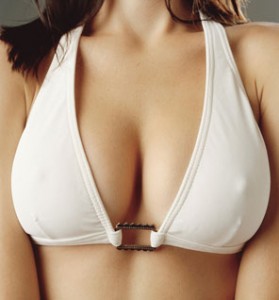Breast Cancer: new study recommends less mammograms
Published: July 05, 2020
Tits out for the (medical) lads. Or maybe not.
It’s all about boobs today as according to a new study, some women should have mammograms to detect for breast cancer more frequently than others, depending on their individual profiles and genetic chances of cancer. Just as women have varying breast sizes, they also have different propensities for developing cancer and therefore each woman’s strategy should be looked at individually.
At the moment, mammograms are given based on a woman’s age rather than her potential for the ‘c’ word. In recent years, this age-based approach has been subject to controversy as health experts contended the age=mammogram approach, recommending that some women require more frequent tests than others. Meaning that some women are having more than they should and some less, under the current standard.

More complex approach to breast cancer screening could keep these and more like them happy and healthy.
The approach these health experts recommend is more complex and personalised, and involves looking at the individual risk factors of each woman independently such as breast density and her family history of cancers, along with age and lifestyle considerations.
Current protocol recommended by the medical experts and the American Cancer Society involves women having a breast screening every two years from the age of 40 onwards, regardless of whether there is a higher risk due to the patient’s family history. The Preventive Services Taskforce has previously suggested that women aged 40-49 should be screened depending on their families’ health history, and whether they are deemed personally at risk and that only women over 50 should have mammograms every two years regardless. The taskforce went on to say that the ‘over-screening’ of women deemed ‘unlikely’ to have cancer had not only a financial implication but also exposed these women to unnecessary radiation along with anxiety related to the test and its possible outcome.
Kylie Minogue used to be famous for her bottom, until 2005 when her boobs got jealous and went all cancer on her.
Research has shown that the denser the breast tissue, the less fat and the higher the risk of cancer. The study itself involved a computer model that was able to compare the health benefits and costs of women who had mammograms every year, against those that undertook them every two, three, four years or had never undertaken one. The computer model was also able to look at the risk factors of the individual and assumed six different outcomes such as healthy, cancer potential and, the least popular, death.
The study looked at how many additional mammograms would be necessary over a decade to prevent a single death from breast cancer in those undertaking the screening every year or less .
Doctors may choose to move to a more personal approach or they may wait for guidelines from medical organizations to be published. The new recommendation would necessitate more in depth consideration of each patient and would require more administration than the current method.
Risk factors include: genetics, diet, alcohol consumption, weight, smoking and oestrogen.
Keep your bouncers healthy with a diet low in animal protein and animal fats and high in fruits and vegetables. Is that Big Mac and milkshake really worth losing a tit for?
Celebrities who have been diagnosed with el cancer del boob include pop princess Kylie Minogue, Christina Applegate, Sheryl Crow and Charlie’s Angel Jaclyn Smith.
If you would like to make a big bouncy comment about this article, please use the big bouncy comments box below:
Images: self.com, lithium-x.deviantart.com, wingfantasy.com, brendadavisrd.com


Leave a Reply